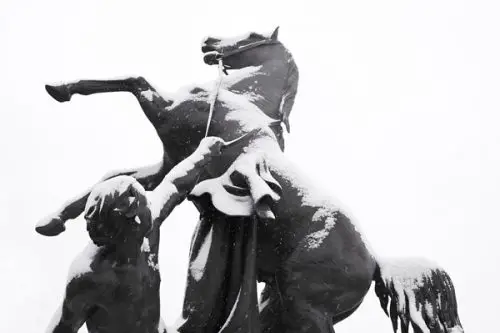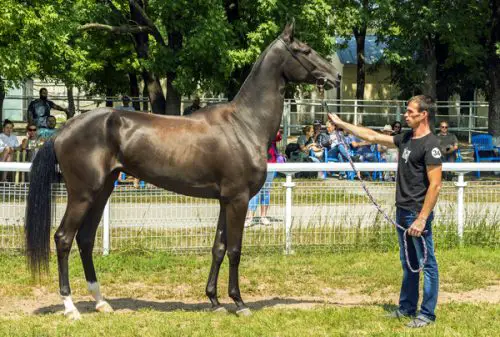According to the research conducted by a UK healthcare provider, Benenden, horse riding was rated the third most dangerous sport after boxing and rugby with less than 15% of respondents stating that it posed the greatest risk (1). In this article, we will be looking at the negative effects of horse riding and how best to prevent them.
At horse stables, equestrian shows, and events, there are dangers which can result in fatal accidents both to riders and the animals themselves. There is absolutely no way of preventing situations from going wrong with our expectations that horses should withstand our weights on their backs when their weight is around 1,500 pounds considering how fast they move at top speed delivering a maximum output of force as they gallop.

A cross country horse race is far more hazardous than an arena show in the sense that there are obstacles that could jeopardize a rider’s safety in the wilderness and cause severe damages. Therefore, no matter your carefulness around your dressage, you can only be sure of reducing risks and not wipe out all dangers.
Negative Effects Of Horse Riding
The negative effects of riding occur as a result of inappropriate dressage handling, harmful terrains where the horse treads on or obstacles to jump during events at the arena. These risky situations lead to terrible injuries like spinal cord impairment, brain damage, long-term disability, or even death.
Other classes of injuries include sprains, bruises, abrasions, fractures and neck, elbow, knee, ankle, shoulder, or wrist dislocations. A great number of these accidents occur while riding with the remainder resulting from kicks and crushing by the horse when dismounted.
Actions that can scare horses and result in such deadly situations are large crowds, abrupt movements, unbearable noises, other pets, and cameras. For this reason, I have gathered relevant steps to take in guiding you while mounting, riding, and descending your horse.
Safety Precautions To Be Followed To Prevent The Negative Effects Of Horse Riding Include:
Alertness
When mounted on your horse, you need total concentration and serenity to stay safe. Toddlers and teens are especially expected to be careful and watchful of their safety by following their instructor’s guidelines at all times. Keep guard of what happens around your horse and be ready to chase other animals posing a threat to your dressage.

Training
Novices in horseback riding, beginners, and children should be supervised until they can master the skills. Racing, jumping, and leading must be done while undergoing training at the farmhouse or arena before advancing to horse shows and grand events or cross-country rides.
Ascending
Climbing your dressage should be done while ensuring maximum contact with the reins and avoiding overhead obstructions under the guidance of a trainer. For kids, their pony or horse should remain in a safe position without movement or held by the instructor while mounting.
Directing
The lead rope attached to the reins should be used to direct the horse and not the rein itself. It is inappropriate to roll the end of the rope over your hand because it could tighten and buckle. Instead, grab the center of the rope after folding it back and forth. You could stumble over and be dragged by the horse if you wrap the lead rope around your body.
Calculated Tactics
Do not startle your dressage by approaching him suddenly. Rather, try to speak to him before moving any inch closer so that he can be aware of your presence. Always approach him from the side and not from the front or behind with tactful awareness. Apply wisdom when you are going inside a barn with so many horses or if you plan to feed them at once because they may gather around you which could be harmful considering you may be kicked or pushed down in a resulting stampede.
Riding On A Path
Until your instructor says you are ready, do not ride out on a trail as a beginner or teenager. He/she will supervise you during lessons, prepare you for trail riding and let you know you are perfect for it at the right time.
Horse’s Comfort
A horse may feel enormous distress with the way he is being restrained or buckled hence you need to bridle and saddle him accurately to avoid him acting up. Also, check his rein and straps to be sure they are in good condition and not worn out or about to break.
Safety Essentials
Wearing safety gear before mounting your horse can prevent fatal incidents that may cause injuries beyond repair. A helmet for protecting the brain and skull, a recommended footwear with strong heels, safety stirrups that aids foot release in the case of a fall, and a safety vest with airbags that contains a release button which can be triggered when involved in an accident especially during cross country races (2).
Pants or jeans are appropriate with shirts properly tucked in and always wear gloves to keep the reins from slipping off exposed sweaty palms.

Serving Food
Some horses can be greedy and unruly when it comes to food. In an attempt to feed your pony from your hand, he may accidentally bite off your finger hence, serve him from a bucket or trough to keep safe.
Temporary Freedom
Always turn your horse’s head behind to face the gate and step through the gate yourself before taking off his reins after exercise or when taking him back to the stable. This will save you from his feet and kicks in the joy of being loose and free.
Daily Care
Grooming your dressage should be done by positioning yourself near the shoulder or hindquarters instead of in front or behind him. Try to be careful about his feet when cleaning or moving around him especially when setting his foot down after a routine check to be sure your feet are well away from him to avoid him stamping his foot on yours. Don’t ever sit or kneel when checking his hoofs instead, squat down in front of him as this gives you an edge of taking flight if he is startled.
Harnessing
When tying a horse, do it at the horse’s eye level and a distance not more than your arm’s length (3). Use an easily detached knot and keep away your fingers when tying with only the lead rope and not the bridle. Tie him to a solid pole or support that he will not be able to wriggle himself away from.
Final points to note on dangers of horse riding
- During horse shows and other events on the arena, spectators should not be allowed into the ring or field and the distance of their seats to the playground must be wide enough for safety reasons.
- When leading a horse, you must do so by looking out for any signs of fear in your horse and try to pacify him by bringing his head closer to your body and pat him until he is calm otherwise their basic instinct of “fight or flight” could set in whereby the horse detaches himself from his leash and runs you over causing serious injuries to you (4).
- Climbing and descending should never be done while the horse is in motion. Ensure your horse is still and relaxed before mounting and beginners or children should be assisted by trained hands to mount and dismount.
- Do not base your match of a horse to a rider on the horse’s size as this means disaster especially with inexperienced riders. The horse’s temperament, his composure, and experience are yardsticks to be used in pairing the rider and his horse.
- If you are riding in a group, ensure to keep two horses’ length between each rider to avoid the horses from feeling threatened by one another during motion.
- Horses tend to spook at new surroundings and people until after a while of getting accustomed to a particular environment or task. Do not panic if you notice your horse is showing such signs in a strange situation.
Glossary
(1) Horse And Hound
(3) Horse And Rider
(4) Robson Forensic
